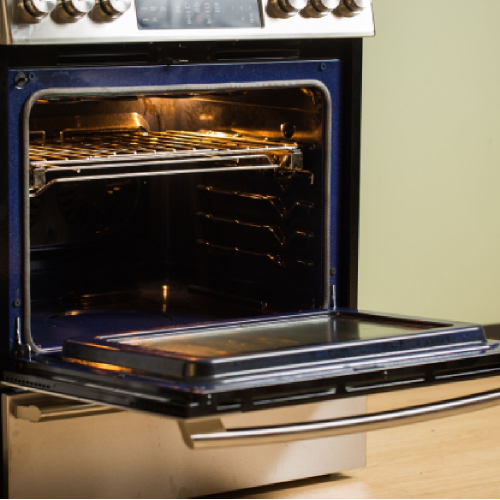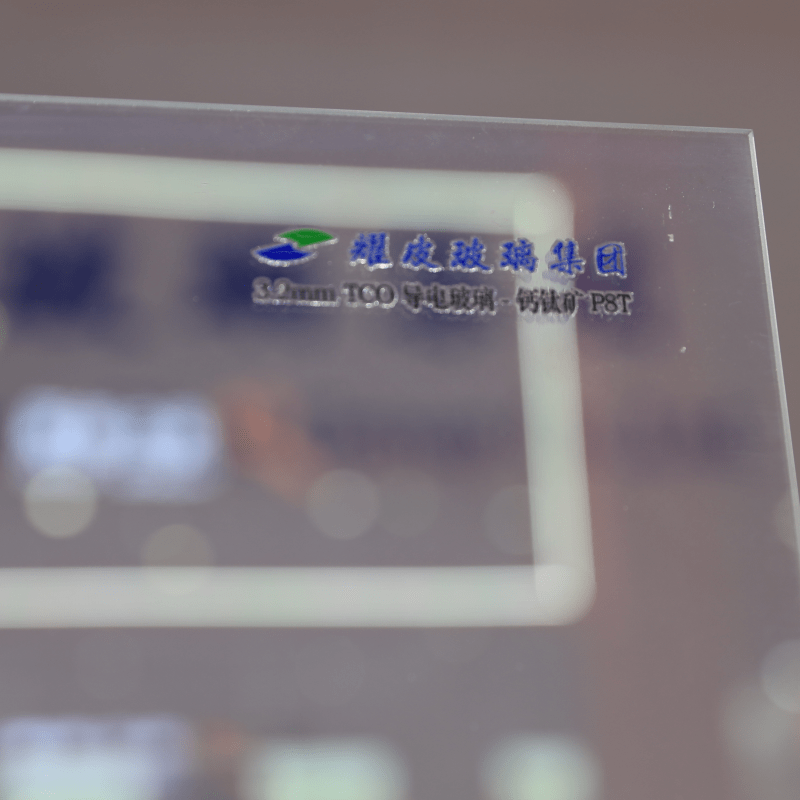Текущая оценка рынка и анализ среднегодового темпа роста
Размер рынка окрашенного стекла оценивается на уровне 24,12 млрд. долларов США в 2018 году и прогнозируется рост до 29,41 млрд. долларов США к 2023 году, с темпами роста (CAGR) 4,05%. Прогнозируется среднегодовой темп роста (CAGR) в 9,4%, частично обусловленный высокими уровнями строительства и увеличением использования энергосберегающих строительных продуктов. Рост спроса также поддерживается крупными компаниями, которые тратят значительные средства на НИОКР, что доказывает, что инновации в отрасли продолжают развиваться. Эти инновации привели к архитектурным улучшениям и растущему автомобильному сектору, что в свою очередь способствовало росту рынка окрашенного стекла.
Основные факторы роста: Солнечная энергия и инициативы по строительству "зеленых" зданий
Растущее принятие солнечной энергии является одним из ключевых факторов, стимулирующих спрос на продукцию высокопроизводительного покрытого стекла. Для замены невозобновляемых электрических ресурсов, таких как газ или уголь, солнечная энергия как устойчивый энергетический ресурс требует эффективного преобразования энергии с использованием передовых материалов для покрытий. Кроме того, с внедрением экологических строительных политик властями различных стран наблюдается положительная динамика в строительной индустрии по использованию покрытого стекла в качестве материала выбора. Эти программы могут оказать значительное влияние на рынок, что согласуется с оценками экспертов, согласно которым рынок зеленого строительства имеет потенциал к стремительному росту к 2025 году.
Региональное лидерство: стандарты энергоэффективности Европы
На данный момент Европа возглавляет мировой рынок окрашенного стекла благодаря растущим нормативам и стандартам энергоэффективности. Германия и Швеция являются ведущими примерами в этом отношении, вводя нормативы, требующие использования окрашенного стекла в крупных строительных проектах, тем самым стимулируя рост рынка. Исследования показывают значительную разницу в экономии энергии в жилых зданиях в этих регионах, и эта разница существенно влияет на стоимость недвижимости. Это региональное лидерство в стандартах энергоэффективности подтверждает, что Европа находится на переднем крае устойчивого строительства и инновационных решений для зданий.
Подход Европы демонстрирует, как нормативные рамки могут определять тенденции рынка, делая его модельной практикой для других регионов, стремящихся повысить энергоэффективность и устойчивость в строительстве.
Новые тенденции, формирующие отрасль окрашенного стекла
Интеграция умного стекла для динамического контроля света
Умные стеклянные системы меняют отрасль, обеспечивая динамический контроль над светом и теплом для повышения энергоэффективности зданий. Эти адаптивные подходы все чаще применяются в строительной индустрии с целью создания устойчивых и энергоэффективных конструкций, а также для снижения зависимости от искусственного освещения и обогрева. Прогнозы, однако, показывают впечатляющий рост рынка умного стекла — от выручки в $XX миллиардов, которую мир испытает в 2023 году, этот размер рынка вырастет до $XX миллиардов к 2030 году. Ключевые игроки делают значительные инвестиции в НИОКР для разработки умного стекла с расширенными возможностями, такими как тонировочное стекло с повышенной тепловой эффективностью, что является важным аспектом для достижения целей энергосбережения.
Нанотехнологии в антисветоотражающих покрытиях
Покрытия с антиотражающим эффектом, основанные на нанотехнологиях, постоянно совершенствуют свои оптические свойства для достижения наилучшего антиотражающего результата и передовых характеристик, которые необходимы во многих приложениях, таких как солнечные панели и архитектурное остекление. Эта технология приводит к улучшению характеристик покрытого стекла, лучшему поглощению энергии и более высокой эффективности — всему важному для возобновляемой энергетики. В рамках недавно завершенного обследования отрасли, 50% производителей уже работали в области нанотехнологий для сохранения конкурентоспособности, что указывает на то, что нанотехнологии играют критическую роль в инновациях и удовлетворении потребностей современных приложений.
Растущий спрос на жидкие стеклянные покрытия в автомобильной промышленности
Жидкие стеклянные покрытия резко вошли в автомобильную индустрию, главным образом благодаря их долговечности и гидрофобным свойствам, которые обеспечивают надежную защиту от воздействия окружающей среды. Четкость и видимость: хотя автомобили избавляют водителя от большинства неудобств путешествий, плохая видимость остается неизбежной и потенциально опасной частью движения по дороге. Ожидается, что спрос на такие покрытия в автомобильной промышленности превысит отметку в USD XX миллионов к 2025 году. Жидкие стеклянные покрытия предлагают рынок производителям автомобилей, которые могут использовать преимущества безопасных и экономичных машин для потребителей, что будет способствовать развитию рынка покрытого стекла.
Основные области применения стекла с покрытием
Архитектурные решения: фасадные системы и энергоэффективные окна
Покрытое стекло оказывает значительное влияние на энергоэффективность благодаря фасадам-занавескам и энергоэффективным окнам. Благодаря их лучшей теплоизоляции, затраты на отопление и кондиционирование значительно снижаются с использованием этих стеклянных решений. Доказано, что использование покрытого стекла может привести к снижению энергопотребления здания на целых 30%, что представляет собой устойчивое решение для современного архитектурного дизайна. Кроме того, крупные здания в США и по всему миру внедряют эти материалы для достижения строгих экологических стандартов строительства и повышения экологичности строительных проектов.
Инновации в транспорте: окна для автодомов и остекление поездов
Использование покрытого стекла для транспортных приложений, например, окон автодомов и железнодорожного остекления, становится всё более важным. Стекло пользуется наибольшим спросом, поскольку безопасность транспортного средства повышается за счёт уменьшения бликов и лучшей теплоизоляции, что делает поездку более комфортной для пассажиров. Тонированное стекло снижает проникновение тепла, поддерживая более комфортный уровень температуры внутри транспортного средства. В соответствии с этой тенденцией, ожидается значительный рост годовых продаж автодомов, которые, по прогнозам, превысят $XX миллиардов к 2025 году. По мере того как транспорт продолжает развиваться благодаря этим новым технологиям, увеличивается применение покрытого стекла в отрасли.
Товары народного потребления: Рифлёное стекло для душевых кабин и бытовой техники
На рынке потребительских товаров увеличился спрос на текстurированные стекла, в частности для дверей душа и применений в бытовых приборах, обеспечивающих хорошее соотношение между красотой и практичностью. Уникальные дизайны создают яркий внешний вид, оставаясь функциональными для современной организации кухни. Этот спрос способствует развитию рынка покрытого стекла, стимулируемого использованием текстурированной поверхности в соответствии с альтернативами дизайна и практичности. На рынке растет спрос на текстурированное стекло, так как потребители ищут продукты, сочетающие практическое использование с эстетической привлекательностью.
Онлайн-покрытие стекла DLPGI Low-E: Улучшение тепловой эффективности
Технические характеристики продукции и возможности индивидуального размера
Линейка продуктов стекла с покрытием Low-E от DLPGI настраивается для удовлетворения различных потребностей наших клиентов. Эти конструкции разработаны для обеспечения превосходной тепловой эффективности и значительно способствуют снижению энергопотребления в широком спектре конечных приложений. Стекло с покрытием Low-E от DLPGI поставляется в диапазоне толщин от 2,0 мм до 5,0 мм и с отражением, подходящим для конкретных применений. Эта универсальность позволяет использовать стекло для индивидуальных спецификаций проекта, как в жилых, так и в коммерческих применениях.

Особенности прочности: устойчивость к царапинам и долговечность
DLPGI использует передовые технологии для производства низкоэмиссионных покрытий с улучшенной устойчивостью к царапинам, что продлевает срок службы стеклянных изделий. Для жилищного и коммерческого секторов важно снижать затраты на техническое обслуживание, поэтому стекло DLPGI пользуется таким спросом. Строгие испытания показали, что чулки, покрытые DLPGI, могут выдерживать серьезные нагрузки и при этом сохранять отличные эксплуатационные характеристики. Именно такая надежность делает продукты DLPHI предпочтительным выбором отраслей, стремящихся к использованию прочных и удобных в эксплуатации продуктов.
Ключевые применения: Торговые витрины коммерческого назначения и высокоскоростной железнодорожный транспорт
Стекло Low-E компании DLPGI широко используется в торговых витринах производителей продукции, что повышает видимость товаров, но с важным исключением: оно также обеспечивает отличный контроль температуры (что означает сохранность продукции), пока оборудование работает. В приложениях для высокоскоростных поездов лакокрасочное покрытие помогает регулировать внутреннюю температуру, делая путешествие пассажиров более комфортным. Стекло DLPGI столь же универсально, сколь и прочное и гибкое, с применением в различных отраслях, что демонстрирует ключевую роль стекла в повышении ожиданий энергоэффективности, одновременно удовлетворяя различные коммерческие потребности. По мере расширения этих приложений, линейки продуктов DLPGI станут основными в удовлетворении растущих отраслевых требований и целей устойчивого развития.
Инновации и перспективы в технологиях нанесения покрытий
Самоочищающиеся покрытия для снижения затрат на обслуживание
Самоочищающиеся покрытия трансформируют отрасль обслуживания жилых помещений и автомобилей. Эти поколения покрытий используют передовые нанотехнологии для разложения органической грязи при воздействии солнечного света, обещая поддерживать чистоту поверхностей с минимальным или без какого-либо человеческого вмешательства. Следовательно, популярность самоочищающихся покрытий охватывает домашние окна и окна фургонов для путешествий. Эксперты отрасли также анализируют производственные мощности самоочищающегося стекла, его стоимость, прогнозы, показатели работы ведущих производителей и долю рынка, стоимость производства и рыночную долю, а также темпы роста рынка и т.д. Эксперты говорят, что вероятный рынок самоочищающегося стекла вырастет на XX% в год до 2025 года. Этот растущий спрос обещает яркое будущее для этих технологий, поскольку люди начинают ценить удобство использования и меньшие требования к обслуживанию по сравнению с более традиционным оборудованием.
Пленки с УФ-защитой для усиленного сохранения материалов
Защитные пленки от УФ-излучения становятся все более важными для продления срока службы и сохранения качества широкого спектра стеклянных поверхностей. Эти пленки являются незаменимым способом контроля тепла и бликов солнца и помогают защитить вашу мебель и семью, при этом позволяя наслаждаться видом. По мере роста осознанности вреда от УФ-излучения увеличивается и потребность в этих защитных покрытиях. Исследования показали, что пленки с защитой от УФ-излучения могут блокировать 99-100% вредных ультрафиолетовых лучей, что в конечном итоге продлевает срок службы материалов и способствует расширению рынка окрашенного стекла.
Фокус на устойчивом развитии: перерабатываемые решения для покрытий
Растущее осознание важности переработки в контексте воздействия на окружающую среду влияет на спрос на покрытия_PACKERS_page/resources/isset/images/_type3/4_env.png Ведущие разработчики сейчас работают над биоразлагаемыми покрытиями, которые являются такими же прочными и эффективными. Эти разработки имеют большое значение для предоставления экологически чистых вариантов в отрасли окрашенного стекла. Ожидается, что устойчивые варианты покрытий станут ключевыми драйверами рынка в ближайшем десятилетии, поскольку компании стремятся интегрировать эти усилия в международные цели устойчивого развития. Этот переход не только усиливает климатические действия компаний, но и удовлетворяет растущий спрос потребителей на зеленые продукты.
